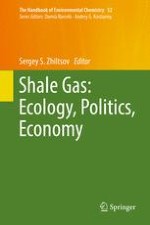2017 | OriginalPaper | Chapter
Study of Some Potential Environmental Impacts of Hydraulic Fracturing Related to Unconventional Hydrocarbons in Hungary
Authors : A. Nádor, Zs. Kovács, Á. Cserkész-Nagy, L. Bereczki, G. Markos, T. Fancsik, A. Cs. Kovács, T. Szőcs
Published in: Shale Gas: Ecology, Politics, Economy
Publisher: Springer International Publishing
Activate our intelligent search to find suitable subject content or patents.
Select sections of text to find matching patents with Artificial Intelligence. powered by
Select sections of text to find additional relevant content using AI-assisted search. powered by
